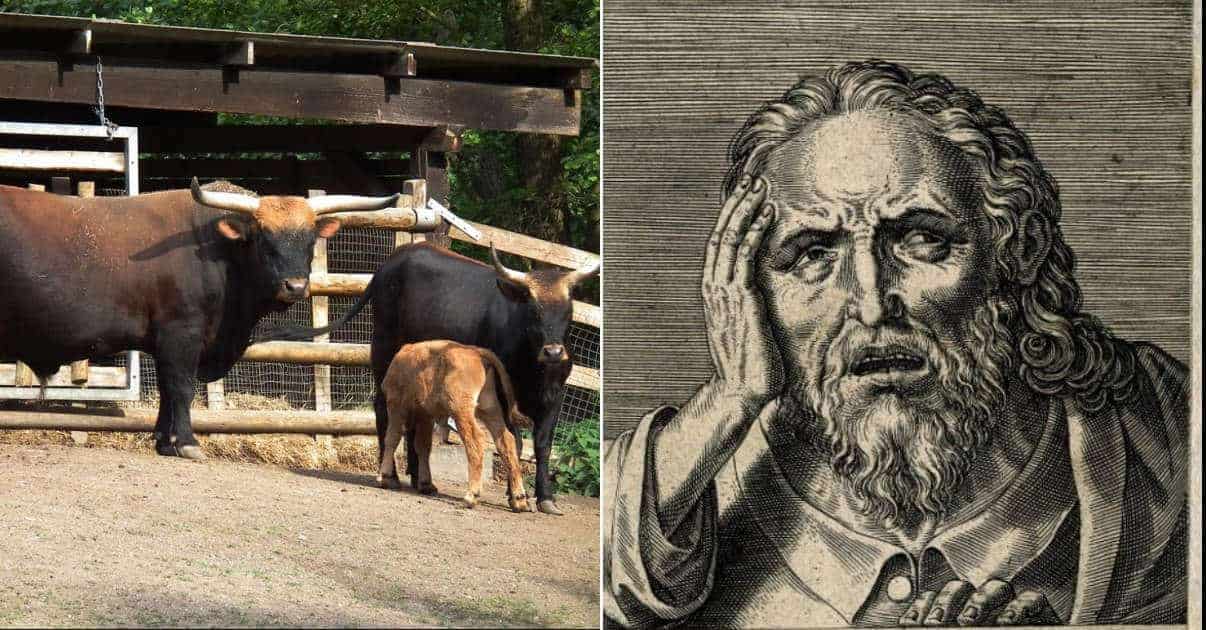History is full of the strange, the odd, the weird, and the wonderful. However, the overwhelming majority of such fascinating instances end up falling into obscurity, and wind up largely forgotten. That is understandable, since history is a vast subject, and there is so little time to cover all, or even most of it. As a result, many things get swept aside in favor of bigger stories, like major conflicts such as World War II, or the giants of history such as Alexander the Great or Napoleon, or major transformative events such as the discovery of the New World.
However, that leaves plenty of interesting stuff by the wayside. Take the time the British Army passed out as standard issue to its Redcoats a sword that couldn’t stab or cut. Or the time the ruler of the prosperous and populous Khwarezmian Empire foolishly and needlessly insulted Genghis Khan, then dared and double dared him to do something about it. Or the time the leaders of the Japanese government, faced with the prospect of an overwhelming invasion, thought it was a rational and practical idea to resist the expected onslaught by training little schoolgirls to fight off heavily armed US Marines with pointy sticks. Or the time a celebrated American hero was embarrassed after turning out to be catastrophically wrong, and tried to heal his pride by starting World War III.

Following is a selection of ten overlooked odd, weird, wonderful or strange moments from history.

Nazi Super Cows
Adolph Hitler was neither blond nor blue eyed, but that did not stop him from obsessing about producing a race of blond and blue eyed “pure” Aryans. Nazi Germany’s entire social structure and legal framework was geared towards that end, encouraging its people to raise huge Aryan families. They even had a human selective breeding program – the Lebensborn – for SS members and unmarried women with the officially approved racial characteristics, to produce what the Nazis termed “super men”. That obsession with purity did not stop at racially engineered humans – it also extended to specially breeding Nazi engineered cows. Unsurprisingly, the resulting Nazi super cows turned out to be murderously aggressive.
In 2015, Derek Gow, an English farmer from West Devon, had a serious problem with his cows – a rare breed of cattle with massive horns, called “Heck super cows”. Gow had imported them in 2009, but out of a herd of thirteen super cows, he was forced to kill seven, because they were super belligerent and kept trying to murder him and his farm workers. As Gow described it: “We have had to cut our herd down to six because some of them were incredibly aggressive and we just couldn’t handle them … The ones we had to get rid of would just attack you any chance they could. They would try to kill anyone. Dealing with that was not fun at all. They are by far and away the most aggressive animals I have ever worked with“.
As it turns out, the Heck breed was initially produced by German zoologists commissioned by the Nazi party to do so. The Nazis, nostalgic for the days when “pure” Germans wandered Europe’s dark forest, wanted a breed of cattle based on the aurochs – a big wild European bull that had been hunted into extinction by the 17th century. So they used selective breeding to extract wild genes from cattle descended from the aurochs.
The result were the Heck super cows, which had a muscular physique, dangerous horns, and a fierce and aggressive disposition. They had a powerful and menacing look about them, that the Nazis just loved, so they used them in propaganda posters as symbols of the Third Reich’s purity and strength. Most were killed during WWII, but a few survived, carrying their Naziesque aggression and murderousness into the present.

